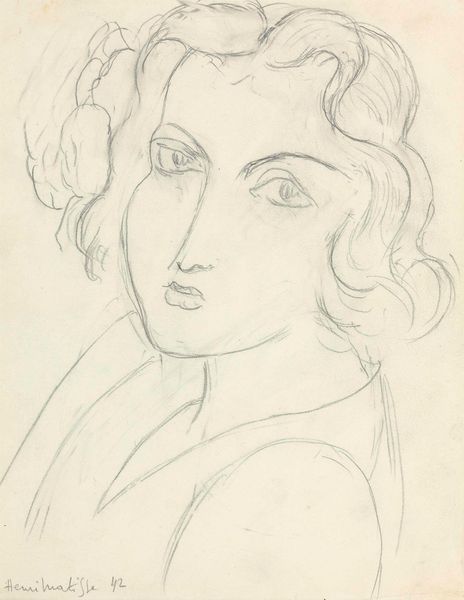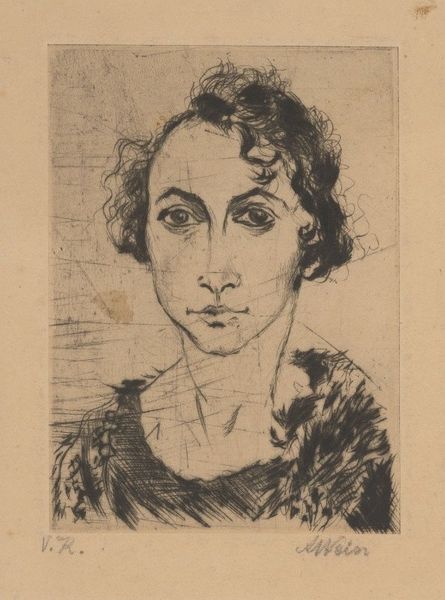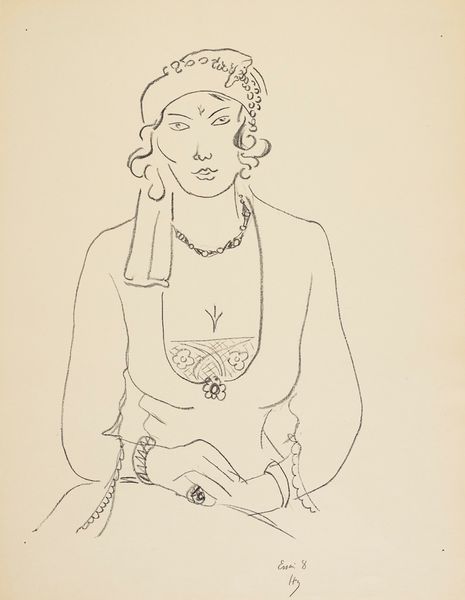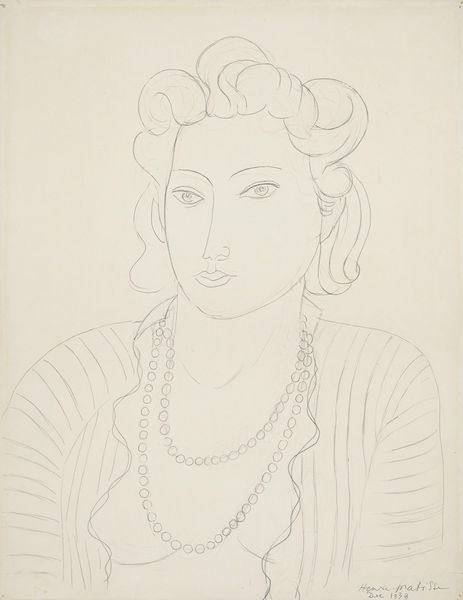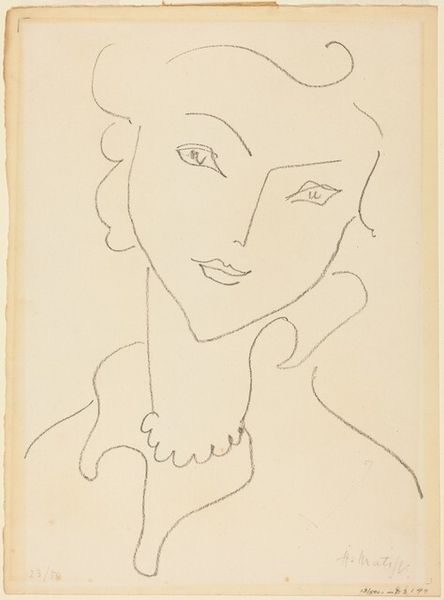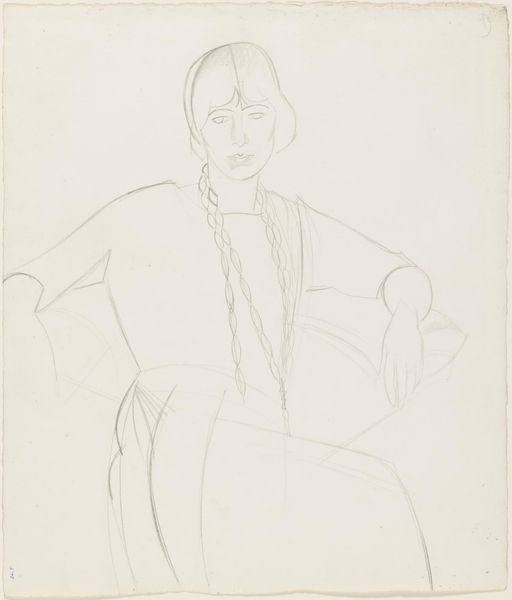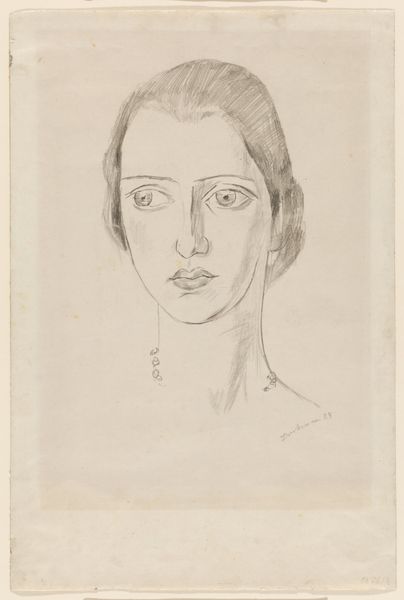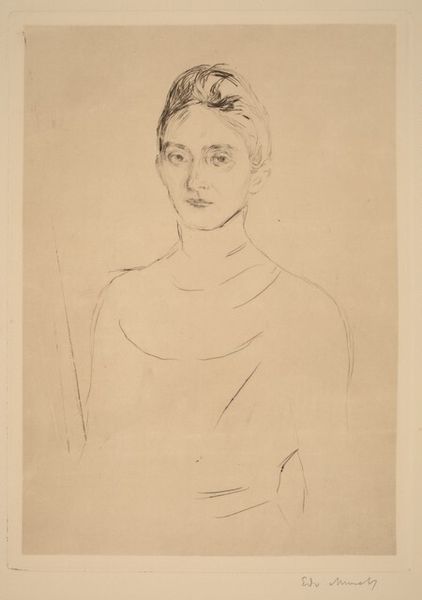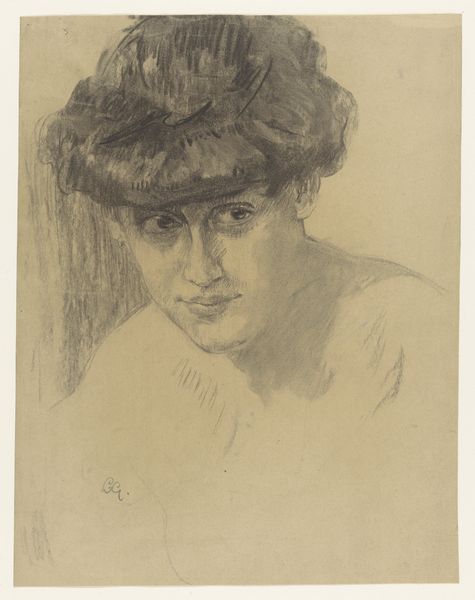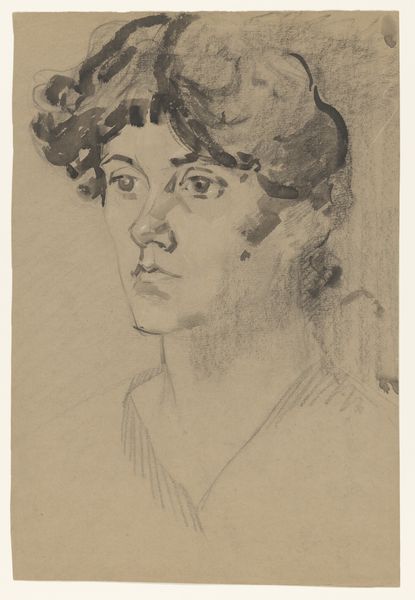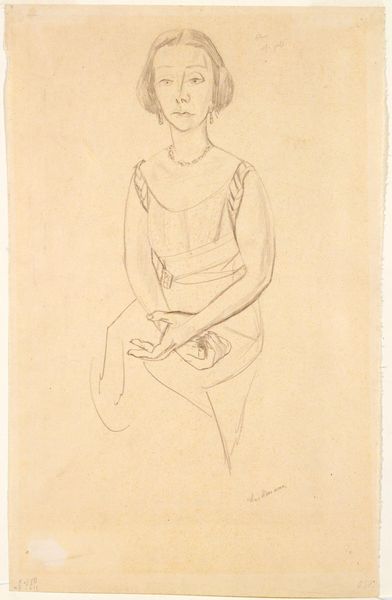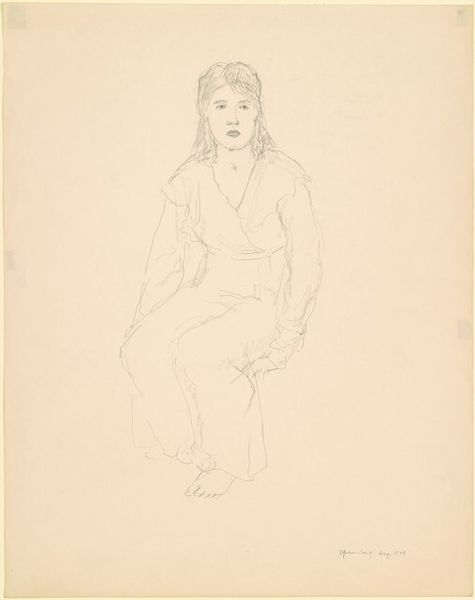
Dimensions: overall: 48.9 x 37 cm (19 1/4 x 14 9/16 in.)
Copyright: National Gallery of Art: CC0 1.0
Curator: This is Henri Matisse's "The Plumed Hat," a pencil drawing he completed in 1919. Editor: It's strikingly delicate. The woman almost seems to fade into the toned paper, as if she's a memory taking shape. Curator: Indeed. Notice how the light pencil work and shading create volume, focusing attention on her expression. What do you make of that expression? Editor: There's a quiet pensiveness about her eyes, a melancholy even. It contrasts so sharply with the elaborate hat, all those exuberant plumes. Perhaps it speaks to the restrictions placed on women of the time. Outward flamboyance masking inner contemplation. Curator: I agree that the hat itself functions almost like a visual barrier, both framing and concealing. The plumed hat in itself symbolizes the era's fascination with elaborate adornment, reflecting the social and cultural expectations around feminine beauty. Do you think the "fauvist" elements add to the effect? Editor: Certainly. Although, compared to his earlier paintings, the fauvist influence here is more subdued, filtered. Yet the simplified lines and focus on expressive contour clearly demonstrate the fauvist pursuit of emotional intensity through form and color...or in this case, the *suggestion* of color through tone. Curator: And tone conveys feeling effectively here. What's interesting is how Matisse’s line, while delicate, also carries a kind of certainty. He's not hesitant. Editor: That confidence is palpable. One can feel the artist's hand, even in these tentative lines. It draws you in, compelling you to consider not just the woman in the portrait, but also the process of creation itself. A reminder that art is not just about representation, but also about expression. Curator: Ultimately, the symbolism offers multiple layers of interpretation. It shows that we project our own understanding to visual components of any artistic creation, and that these meanings can evolve over time. Editor: Yes, it becomes a mirror, reflecting the perspectives of each successive generation. That's the enduring power of portraiture, isn’t it? To see ourselves, or at least, aspects of ourselves, in the eyes of another.
Comments
No comments
Be the first to comment and join the conversation on the ultimate creative platform.
